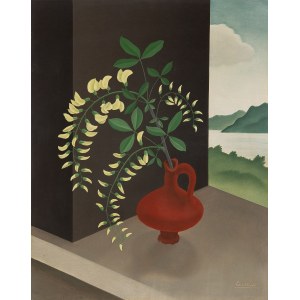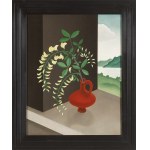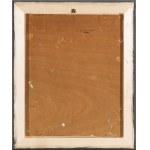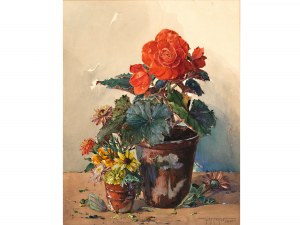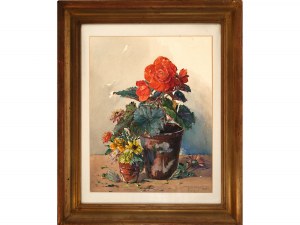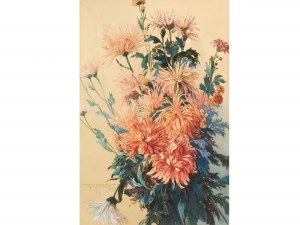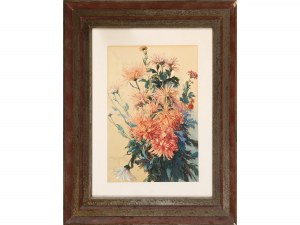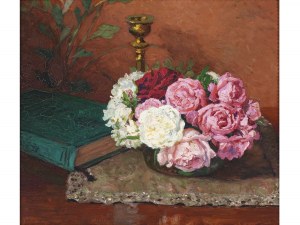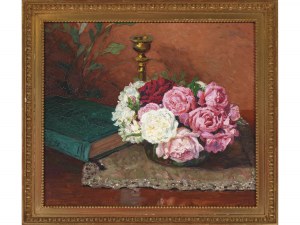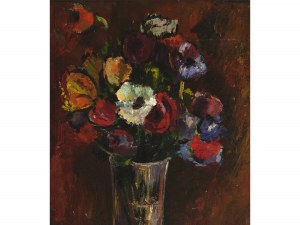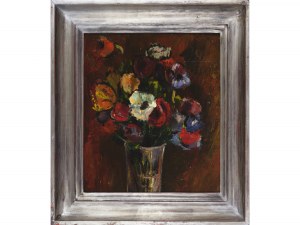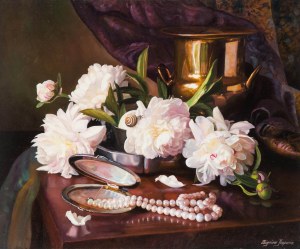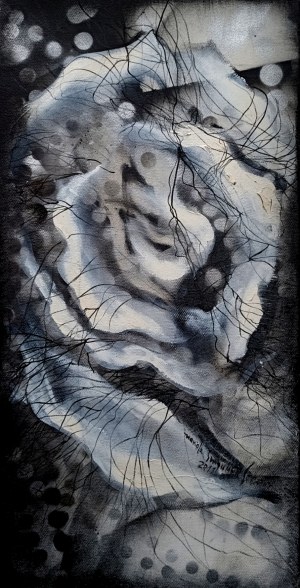ALBIN EDELHOFF *
(Mengeringhausen 1887 - 1974 Rhaunen)
Still life with flowers
oil/wood, 50,6 x 40,7 cm
signed Edelhoff
verso stamp Edelhoff, Cologne Bayenthal Heidekaul
Provenance: European private collection
ESTIMATE °€ 4.000 - 8.000
START € 3.000
German painter and graphic artist of the 20th century. Representative of the New Objectivity. Trained in Paris and Berlin. After an expressionist phase, development in the direction of New Objectivity. From 1937 in the yellow house, a studio house of the city of Cologne together with Hubert Berke, Severin Düx, Heinrich Hoerle, Anton Hoch, Josef Mangold, Toni May, Irma Müller-Hermann, Hanns Rheindorf, C. Schreiber, Robert Seufert, P. H. Simon and Heinrich Von den Hoff. Created landscapes and portraits but especially still lifes with flowers.
The flower, still life, landscape and portrait painter as well as graphic artist Albin Edelhoff, who trained in Berlin and Paris, found his way to the New Objectivity after an Expressionist phase, in which he specialized mainly in floral still lifes. This example, which is particularly typical of his approach to painting, presents a branch of the flowering common laburnum (Laburnum anagyroides) in a reddish-brown vase. It vividly illustrates not only the principles of New Objectivity, but also of neo-Saxon still life painting. Moving slightly to the right from the vertical apex line, Edelhof arranges the bright yellow flowering branch along with foliage in a bulbous, red-brown vase in front of a brown-violet surface. Like many representatives of neo-objective still life painting, Edelhoff does not compose against the edges of the picture and also erases any trace of the painterly working process. Moreover, the exclusion of any movement here has the effect that the individual elements of the picture are perceived in isolation and thus appear "enchanted", even "ghostly". Ernst Jünger wrote in his "Sicilian Letter to the Man in the Moon": "No, the real is just as enchanting as the enchanting is real". By detaching the individual pictorial elements from their realistic context, a condensation of meaning takes place, which apparently shows itself hidden beyond, behind, or below the deceptively realistic level of the motifs. Even in the opening of the pictorial space at the threshold between the interior and the outside world, Edelhoff becomes little concrete: it could be an opening to a terrace, for in the background on the right, the painter reveals a view of a river or lake landscape lined by mountain ridges and bordered in the middle ground by a wooded riparian strip. The plain gray ground surface of this window opening accentuates the exposed vase, which is somewhat disproportionate in its perspective drawing and modeling. It is thus somewhat in dissonance with the clearly contoured and detailed blossoms of the laburnum. In Edelhoff's case, this can obviously also be traced back to Expressionist aftermaths, since New Objectivity replaced the expressive deformation and superficial observation of objects with a harmonious purification of forms and a miniature-like or almost microscopic mode of representation. This clumsy-looking vase could therefore still be a relic of one of these expressionist stylistic devices. Similar to the illustrations of herbaria made according to scientific criteria, the painter also analyzes the depicted plant, whose plant parts are all poisonous and which is also known in German-speaking countries as Baumbohnen, Bohnenbaum, falscher oder deutscher falscher Ebenbaum, Hosen and Schoontjes (East Frisia) or Kleebaum and Markweiden. Here, Edelhoff achieves a metallic clarity while hardening the colors and purity of the local colorite when painting flowers, foliage and vase. His coloring is characterized by a disciplining force that also speaks from the cold rigidity of this still life and at the same time touches on a developmental phenomenon of Neue Sachlichkeit. The movement that was usually latent in Expressionism has here been transformed into an austere stillness or a tense persistence. Moreover, the picture glows and dawns through constant, very gradual swelling and falling of the shading, resulting in a sonorous modeling. Through the clarifying as well as deepening mode of representation, even the floral is degraded to a sober, austere and puristic object of the world of things. Nothing is treated summarily by Edelhoff.
Everything primal - such as the landscape superimposed in the background, which can only be vaguely localized topographically - is subjected to a process of cultivation, and thus the almost Old Master-like river or lake landscape with its glassy, rigid water surface becomes a purist world landscape. Edelhoff, who always remained deliberately apolitical and served as a soldier on the Western and Eastern fronts during World War I, only found his way to New Objectivity via an Expressionist phase. In 1937 he moved into the Yellow House in Cologne-Raderthal, which served as a studio for the city of Cologne and where other regionally important artists such as Hubert Berke, Severin Düx and Josef Mangold also lived and worked. When the National Socialist regime came to power, he tried to make ends meet with wood and linocut art, which was particularly popular at the time, and in which he now portrayed German cities and landscapes. After the end of the war and his marriage to the much younger music student Hildegard Blatt, who came from Rhaunen in the Hunsrück region, he went on painting trips to Italy, North Africa, Greece and France, where he recorded his travel impressions on location in watercolors.
PLEASE NOTE:
The purchase price consists of the highest bid plus the buyer's premium, sales tax and, if applicable, the fee of artists resale rights. In the case of normal taxation (marked ° in the catalog), a premium of 24% is added to the highest bid. The mandatory sales tax of 13% is added to the sum of the highest bid and the buyer's premium. The buyer's premium amounts to 28% in case of differential taxation. The sales tax is included in the differential taxation.
最後に閲覧したロット
出品リストを見るにはログインする必要があります
お気に入り
出品リストを見るにはログインする必要があります



